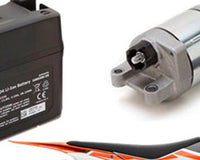Table of Contents
Primary cell batteries come in many shapes and sizes. From AA to D size, they can function as an effective power source for any device you might need them for. Unlike secondary battery types, a primary cell battery is not rechargeable and is designed to be used until the voltage is too low to function.
When this happens to your batteries, it is no longer efficient to power your electronics and other devices; therefore, these units must be discarded properly so as not to cause potential environmental damage if disposed of through a landfill.
In this blog, you will learn more about the types of primary batteries, their advantages and disadvantages, and why they're better than secondary cell batteries.
Primary Cell Battery Types
1. Lithium Batteries
Lithium batteries are the newest development in primary battery technology. These long-lasting, high-energy-density and lightweight power sources have been proven to be reliable for all types of devices — from smartphones to electric cars.
2. Zinc-Carbon Battery
The Leclanche cell or zinc-carbon dry cell battery is a very popular type of battery that is used in many countries. It has good performance, low cost and high availability to name just a few benefits that make it perfect for your needs.
3. Alkaline Batteries
Alkaline batteries are the best choice for applications that require a high rate or low-temperature capabilities. They’re pricier than Leclanche cells but they are well-suited in devices that are placed in locations with uncontrolled temperatures — such as smoke alarms and flashlights.
4. Mercuric Oxide Battery
The use of Mercuric Oxide batteries is limited because they contain Mercury and its compounds which can be toxic to the environment. However, this battery’s stability makes it a good choice for long term storage as well as outdoor operations where temperatures don’t always remain high enough throughout the winter months.
Advantages of Using A Primary Cell Battery
- Primary batteries are convenient to use and a simple way to power your device.
- The best types of batteries for low drain and cost applications are primary ones. For example, watches or toys that don't need a lot from their power source but still want the ability to be battery-powered so they can work without interruption when needed most!
- The number one reason why primary batteries are so much better than their rechargeable counterparts? Cost. You can get a pack that will last you years, without having to worry about getting charged again or dealing with cords while on the go.
- battery life is the best part about these devices. Primary batteries require little to no maintenance, making them perfect for people who are always on the go and
- Primary batteries are a reliable and powerful source for portable electronics.
- They don't discharge nearly as fast, which makes them perfect in the middle of an adventure when you need your phone or tablet to last.

Disadvantages of Using A Primary Cell Battery
- It is important to note that these batteries are not suitable for high drain applications.
- You will need constant replacement because it can be expensive when compared with other options on today’s market.
- The environmental impact of disposable batteries is much more detrimental than that of rechargeable ones.
The non-rechargeable battery is the first choice for most users with its wide range of advantages. For one, it lasts much longer than rechargeable ones, which makes it a convenient option if you don’t have the patience to recharge a battery. In addition, a primary battery is a great choice for people who don't want to spend their money on anything more expensive and complicated because these batteries are simple enough that even beginners can use them without any difficulty.
Get the best batteries for your business and professional needs here at Battery Specialists. We’re the largest battery stockists in Australia.
Get in touch with us today for all your battery needs.












